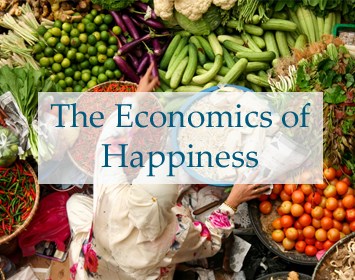Inauguration 2017 Special Coverage w/ Angela Davis, Naomi Klein, Ralph Nader & More
Menu

Special coverage in the Trump Era
From Public Citizen's Corporate Presidency site: "44 Trump administration officials have close ties to the Koch brothers and their network of political groups, particularly Vice President Mike Pence, White House Legislative Affairs Director Marc Short, EPA Administrator Scott Pruitt and White House budget director Mick Mulvaney."
Dark Money author Jane Mayer on The Dangers of President Pence, New Yorker, Oct. 23 issue on-line
Can Time Inc. Survive the Kochs? November 28, 2017 By Jane Mayer
..."This year, among the KochsŌĆÖ aims is to spend a projected four hundred million dollars in contributions from themselves and a small group of allied conservative donors they have assembled, to insure Republican victories in the 2018 midterm elections. Ordinarily, political reporters for Time magazine would chronicle this blatant attempt by the Kochs and their allies to buy political influence in the coming election cycle. Will they feel as free to do so now?"...
"Democracy in Chains: The Deep History of the Radical RightŌĆÖs Stealth Plan for America" see: our site, and George Monbiot's essay on this key book by historian Nancy MacLean.
Full interview with The New YorkerŌĆÖs Jane Mayer March 29, 2017, Democracy Now! about her article, "The Reclusive Hedge-Fund Tycoon Behind the Trump Presidency: How Robert Mercer Exploited AmericaŌĆÖs Populist Insurgency."
Democracy Now! Special Broadcast from the Women's March on Washington
The Economics of Happiness -- shorter version
Local Futures offers a free 19-minute abridged version of its award-winning documentary film The Economics of Happiness. It "brings us voices of hope of in a time of crisis." www.localfutures.org.
What's New?
June 11, 2016
Globalization and the American Dream
by Helena Norberg-Hodge, Steven Gorelick
Published on June 09, 2016 by Common Dreams
"ŌĆ” America is a new kind of society that produces a new kind of human being. That human being ŌĆō confident, self-reliant, tolerant, generous, future-oriented ŌĆō is a vast improvement over the wretched, servile, fatalistic and intolerant human being that traditional societies have always produced." ŌĆöDinesh DŌĆÖSouza, WhatŌĆÖs So Great About America
Implicit in all the rhetoric promoting globalization is the premise that the rest of the world can and should be brought up to the standard of living of the West, and America in particular. For much of the world the American Dream ŌĆō though a constantly moving target ŌĆō is globalizationŌĆÖs ultimate endpoint.
But if this is the direction globalization is taking the world, it is worth examining where America itself is headed. A good way to do so is to take a hard look at AmericaŌĆÖs children, since so many features of the global monoculture have been in place their whole lives. If the American Dream isnŌĆÖt working for them, why should anyone, anywhere, believe it will work for their own children?
As it turns out, children in the US are far from ŌĆ£confident, self-reliant, tolerant, generous, and future-orientedŌĆØ. One indication of this is that more than 8.3 million American children and adolescents require psychiatric drugs; over 2 million are on anti-depressants, and another 2 million are on anti-anxiety drugs. The age groups for which these drugs are prescribed is shockingly young: nearly half a million children 0-3 years old are taking drugs to combat anxiety.[1]
Most people in the ŌĆśless developedŌĆÖ world will find it hard to imagine how a toddler could be so anxiety-ridden that they need psychiatric help. Equally difficult to fathom are many other symptoms of social breakdown among AmericaŌĆÖs children. Eating disorders, for example: the incidence of anorexia, bulimia and other eating disorders has doubled since the 1960s, and girls are developing these problems at younger and younger ages.[2]
If eating disorders are the bane of AmericaŌĆÖs young girls, violence is a more common problem for its boys. Consider the fact that there have been more than 150 school shootings in the US since 1990, claiming 165 lives. The youngest killer? A six-year old boy.[3] ...

